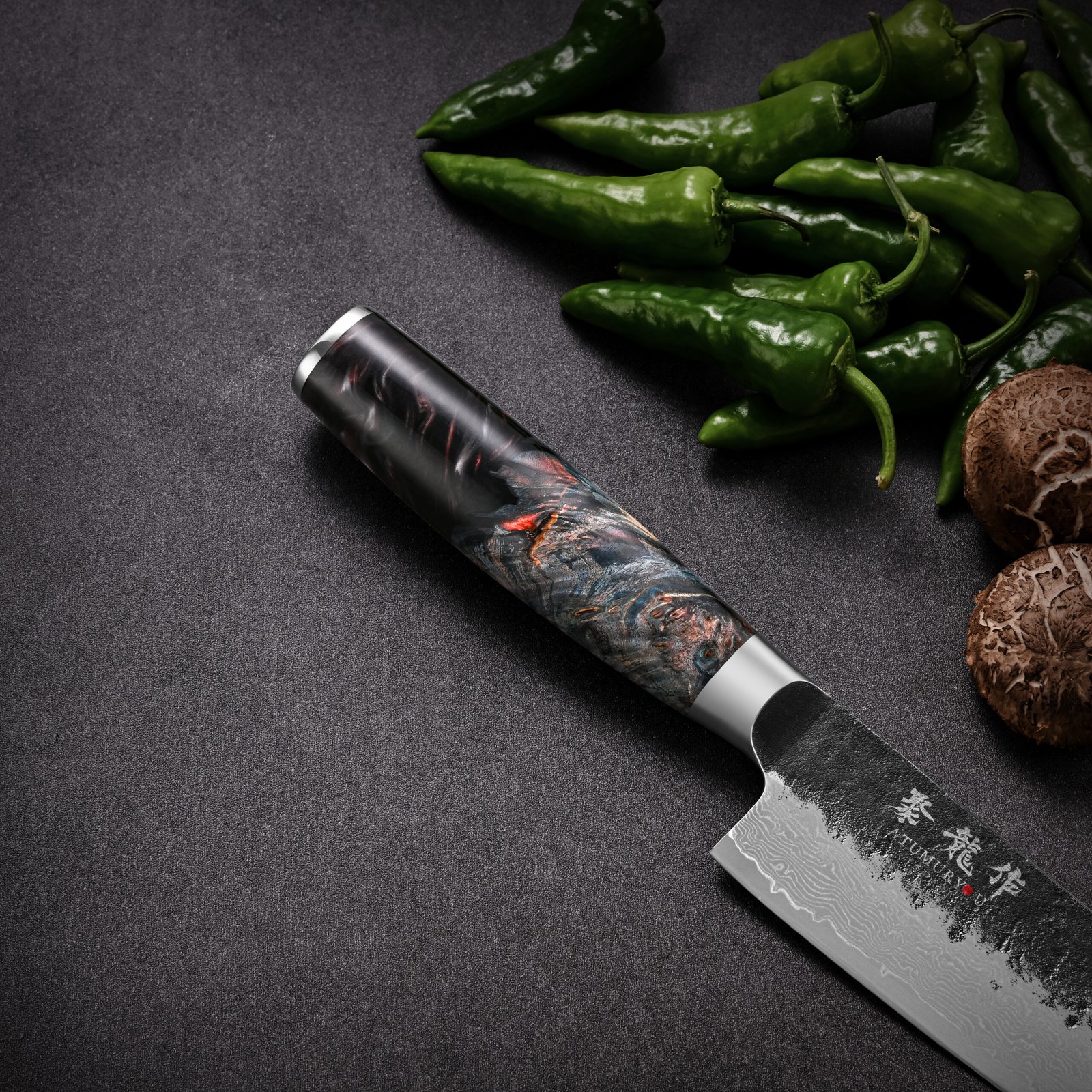Beautiful Plants For Your Interior

When choosing a Japanese kitchen knife, most people focus on the blade: the steel, the sharpness, the cutting performance. But just as important—especially for serious home cooks and professionals—is the handle. The handle shapes your grip, your comfort, and even your control over the blade. In Japanese knife-making tradition, the handle is more than a functional component—it’s a cultural design element rooted in craftsmanship and performance.
So, what are the different types of Japanese knife handles, and how do you choose the right one for your needs? Let’s explore.
- The Two Main Styles: Wa vs. Yo Handles
In Japanese knives, there are generally two handle categories:
Wa-Handle (和包丁の柄) — Traditional Japanese Handle
Material: Usually made from lightweight woods like magnolia, walnut, cherry, or ebony. Sometimes paired with buffalo horn or pakkawood ferrules.
Shape: Common shapes include:
- Octagonal – Balanced for both right and left-handed users.
- D-Shaped – Slightly contoured for right-handed comfort.
- Oval – Symmetrical and simple, often for lighter knives.
Weight Distribution: Much lighter than Western handles, which shifts the balance closer to the blade, allowing for better precision and control in slicing.
Aesthetic: Offers a clean, minimalist look, highlighting traditional Japanese craftsmanship.
Yo-Handle (洋包丁の柄) — Western-Style Handle
Material: Usually made from pakkawood, micarta, or other stabilized composites that offer durability and resistance to moisture.
Shape: Full tang (metal runs through the entire handle), riveted, and often contoured for ergonomic grip.
Weight Distribution: Heavier than Wa handles, providing a more balanced center, especially useful for those accustomed to Western knives.
Aesthetic: More robust and familiar to users who have used European-style knives.
- How Handle Material Affects Performance
Each handle material has unique benefits and drawbacks:
| Material | Pros | Cons |
|---|---|---|
| Magnolia Wood | Lightweight, antibacterial | Can discolor over time |
| Walnut/Cherry | Beautiful grain, traditional feel | Needs occasional oiling |
| Ebony | Very dense, luxurious look | Heavier, more expensive |
| Pakkawood | Durable, water-resistant | Slightly less traditional |
| Micarta | Industrial-strength, stable | Lacks the natural warmth of wood |
Tip: If you’re working in a humid kitchen or often handle wet ingredients, opt for stabilized wood or synthetic handles for longevity.
- How to Choose the Right Handle for You
Here are a few key considerations when choosing your knife handle:
Hand Size and Grip Style
Smaller hands might benefit from oval or D-shaped Wa handles.
Larger hands often feel more secure with octagonal Wa or Yo handles.
Cooking Habits
If you cook daily and do a lot of prep, a Yo handle may offer more wrist support.
For precision cuts, sushi preparation, or lighter ingredients, the blade-forward balance of a Wa handle excels.
Cultural Preference
Prefer traditional tools and aesthetic? Go with a Wa handle.
More familiar with European chef’s knives? Start with a Yo handle.
- Caring for Your Knife Handle
Proper care extends your handle’s life:
- Avoid soaking wooden handles in water—this can cause warping or cracking.
- Use food-safe mineral oil occasionally to maintain wooden handles.
- Store in a dry place and use a knife stand.
Conclusion: Balance, Beauty, and Personal Preference
Whether you choose the traditional grace of a Wa handle or the rugged reliability of a Yo handle, understanding the structure and purpose of your knife handle will help you select a tool that fits your hand and enhances your kitchen experience.
A flat-lay photo showing various Japanese knife handles in a row—octagonal, D-shaped, and Yo-style—on a wooden surface with soft natural light. Add labels and subtle annotations to each handle type.